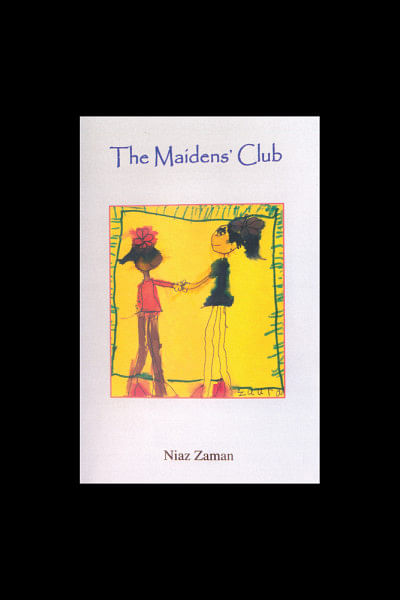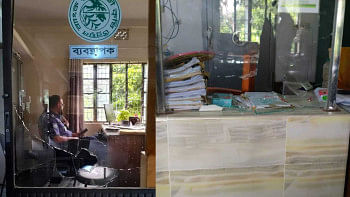The Maidens' Club

If you grew up as a teenager in the 1960s (and in the 1950s, or in the early1970s), and had knowledge and experience of the life led by the upper crust society in then East Pakistan (now Bangladesh), going through Niaz Zaman's The Maidens' Club might very well bring about a sense of déjà vu or nostalgia, or both, in you. A dozen short stories will take many of the familiar set down memory lane, and enlighten those growing up from the 1980s onwards on what life in Dhaka was like as lived by essentially the relatively small number who made up the upper class citizenry. They will also get more than an inkling of the state of Dhaka then, in contrast to what it has become down the years to this day. In a nutshell, Dhaka, for good reasons, has been categorized as perennially belonging among the top three most unlivable cities in the world for a number of years this century. And, although no such classification was done in the last century (at least not of any that I am aware of), it can safely be said that this city, then essentially a large town, would not have been demeaned in the manner it is now.
The opening story, "The Maidens' Club", brings out Dhaka of the 1960s through two of the protagonists, Zainab and Zeenat, senior citizens reminiscing about the old days:
"How different Dhaka was in those days! A sleepy little town with single- and double-storey houses set in the middle of a huge lawn --- new Dhaka, that is. Old Dhaka was always crowded, with houses built close together," Zainab said. "We used to go to Royal Stationery to get books, that's how I know what old Dhaka looked like."
"And the highest buildings were the flats in Azimpur and those on Bailey Road --- Kahkushan, Gulfishan, Ashiyan," Zeenat commented.
Now contrast in your mind's eye, if you will, that image with the one of present-day Dhaka, which has been turned into essentially a glitzy mega-slum, and you might begin to understand the feeling of nostalgia in those who had lived in Dhaka with wide-open spaces, plenty of greenery, and less hectic lifestyle, even if the electronics revolution has brought about a bounty of amenities and been a major factor behind the Dhaka of the new millennium. Notice, too, the perspective of the upper society woman towards old Dhaka (which, these days, retains the same congested appearance, albeit with the sense of crowdedness having been heightened with the construction of close-to-kissing high-rise buildings on small plots of land).
"The Maidens' Club" has three women in a small café chatting about a bygone era they had grown up in, and, in the process, highlight contrasting features of their heydays and the world of Dhaka in their advancing years. They are thankful for the internet that has all but erased time and space, and has allowed them to keep in touch over vast physical distances, even as they notice a group of four, two young men and two young women, enter the café. One of the men is clad in a T-shirt, the other in an ochre-coloured khadi fatua with an embroidered stand-up collar, while one woman, short-haired, was in a flamboyant cotton orange and red sari, and the other in a Grameen red and green checked kurta with a matching gamchha wound like a turban around her head. Quite different from the attire of their young days! Now, in their twilight years, "Death had become a part of their lives."
Other stories also indicate the dress code of decades back, but "The Maidens' Club" offers other features down memory lane. Irrespective of their station in life, "all our mothers sewed in those days --- some more than others." Hardly any woman having crossed her teens remained unmarried. And, even after one got engaged, one could not mix freely. "Made for Each Other" is a story of a rather strange relationship between Rashid and Suraiya, two Dhaka University students of the early sixties (historians and other scholars have classified it as one of the defining decades in human history), who were considered by their fellow students as being made for each other. Their story is about jilted love brought primarily about by certain social norms of the day, but the denouement of their story is both poignant as well as indicative of the defiant character of Suraiya. This story, too, harks back to the old days, when the Dhaka British Council was a popular haunt for young lovers' surreptitious meetings. And the British Council of those days is unrecognizable in terms of ambiance, facilities, and sylvan surroundings from the one of today.
The story of another jilted woman, "The Woman Who Rose", is one of the very few set in the computer-driven age. Jahanara, who struggles to support her family as a computer operator in a newspaper, was seduced by a colleague who then got married to someone else. She contemplated suicide and even murdering her lover, but transcended her vengeful self to reveal herself as a strong, determined woman. "The Writer" is about an acclaimed author of Bangladesh who has a grievance that, although he has been conferred all the notable awards of his country, he has not been able to garner any international prize like a few of his younger countrymen writing in English. Commenting to his wife about all the prizes that Bangladesh has bestowed upon him, he laments,"…but are they the same as winning just one prestigious international prize?" He also manages to incisively bring out the differences between writers of his generation and the later ones: "They are not as concerned as we were about social and political issues. Their themes are very different from ours, also their sense of identity, of who they are in the world."
"Mrs. Jalil's Jelly" gives an account of another aspect of the elite society's lifestyle of the pre-Bangladesh Dhaka days, in this instance, of food, specifically guava jelly. For good measure, the recipe for making guava jelly is provided. "A Quilt for Mrs. Rahman's Grandson" is a poignant tale of an old grand dame carrying out a family tradition of making quilts for her anticipated grandchild, and the flouting of that tradition by her daughter-in-law, with support from her son. The last line of the story is moving and, in a way, suggests the parting of the ways of age-old tradition that was observed by almost all Bengalis, and not just those from the upper end of society, and the ideas and practices of the glocal world.
In a somewhat diluted form, this rupture is highlighted in "How Do I Love Thee?" The pre-glocal society (not that the phenomenon has disappeared from the Internet Age, far from it) is delightfully recounted in the story of Boro Nana who, acceding to the customs of the day, had only viewed the white little finger of a prospective bride and had (probably joyously) given his consent to marrying her. Upon marriage, however, having discovered that "the little finger belonged to a woman whose nose was, for all intents and purposes, non-existent," Boro Nana hastily enlisted in the army and disappeared in the jungles of Burma! The story contains this wise observation: "Traditions change," one of the protagonists exclaim. "Human beings make tradition so why can't we change them as well?" One tradition of Bangladesh that the wedding of the two Internet Age glocal young man and woman breaks is that they had distributed a detailed programme of their wedding ceremony to the guests. However, in giving a long drawn-out description of the ceremony, the author resorts to providing some insipid details of Hindu rituals, Native American rites and Irish blessings being performed, as well as recitation of a Shakespeare poem and a couple from Khalil Gibran.
"The Embroidery Prize" is rather bland, and deals with an embroidery contest among students of a females-only premier educational institution of Dhaka (which offered both Matriculation and Senior Cambridge Examination). The prototype for the fictional school can probably be guessed at by those who were privy to those old Dhaka days, as could be of the fictional shaven-headed female sculptor in the very powerful story "The Statue". This last story is compelling and will surely cause the knowing and discerning readers to ruminate and wonder. Nostalgia also creeps in several places in "The Four-Anna Coin", a story of tender love in the old days: "…in those days one could get a rickshaw ride from the Dhaka Medical College to Shantinagar for four annas." Or twenty five paisas, but, of course, the average income level for a wage earner was much lower than that in the present, and the cost of living was also lower. "Only God Can Make an Ear" is very interesting, and contains a brief reference to a big businessman who, on hiring a call girl to spend the night with, discovers that it is his own superbly made-up and seductive daughter who studies at the university and resides in Women's Hall.
"The Special Member" has this wicked reference to the membership number 303, suddenly recalled by a special member of an elite club in Dhaka, of which her deceased high-ranking husband had been a member. 303 is the popular name of a World War I vintage rifle, but was a buzzword in the late 1960s and early 1970s as the number of high-ranking civil servants of Pakistan who were sacked from their jobs by President Ayub Khan! The reader can make his/her own inferences. For me, the most memorable observation in the book is attributed to the elderly woman in "The Four-Anna Coin": She never liked the miniature replicas of the Taj Mahal. "After seeing the Taj, she was even more convinced that one could not possess the Taj in miniature, only in one's memory." The Maidens' Club is a smorgasbord of primarily Dhaka and its upper-class society down memory lane, and the occasional profound perspective.
The reviewer is an actor and educationist.

 For all latest news, follow The Daily Star's Google News channel.
For all latest news, follow The Daily Star's Google News channel. 



Comments